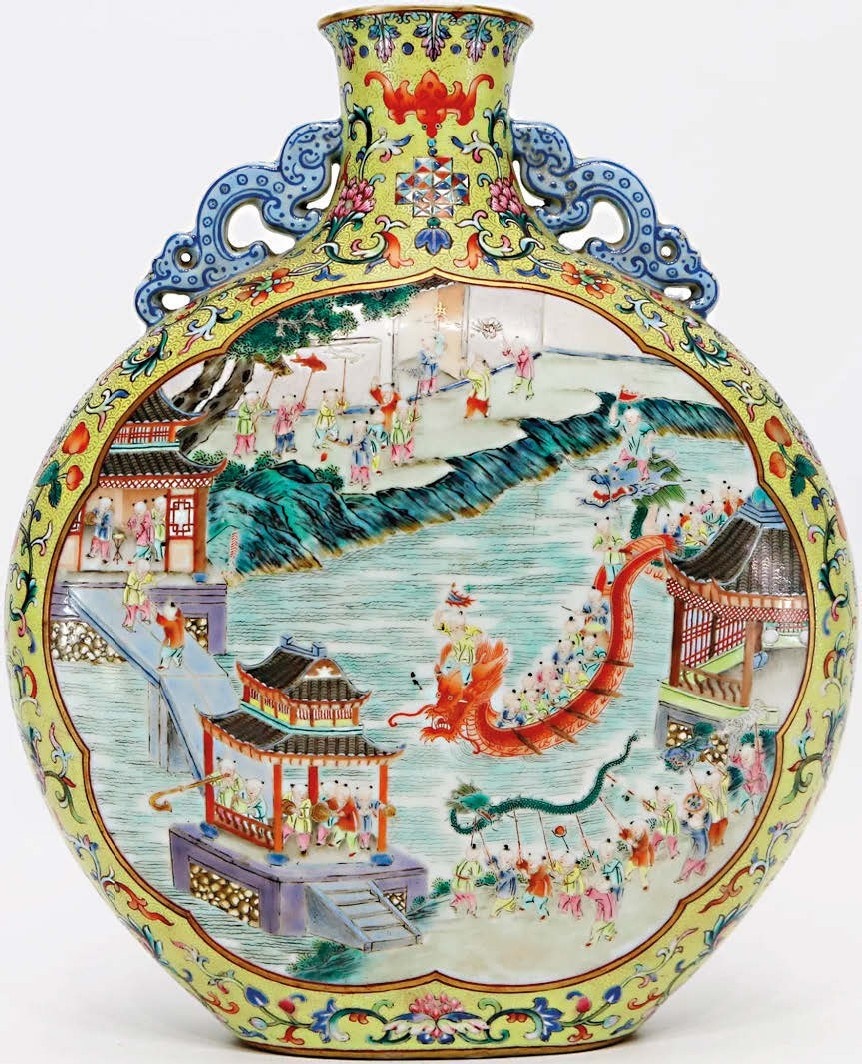
Just ahead of the Lunar New Year, a rare Chinese moon flask sold for a whopping 75 times its high presale estimate at Dixon’s Crumpton Auction, a small auction house in Maryland. Estimated to sell for between $1,000 and $2,000, multiple bidders drove the price up to $155,000 at the sale, held on January 25.
The vase—which has a hole drilled through the insignia on its base, suggesting that it was previously used as a lamp—is believed to be from the imperial kilns for the Qing emperor Jiaqing (1796–1820). The damage to the object didn’t dissuade buyers since famille-rose-decorated moon flasks, or bianhu, are rare. Moreover, the yellow ground with a dragon boat race scene is considered highly desirable among collectors of Chinese art and antiquities.
A pair of similar moon flasks with marks for the emperor Qianlong (1736–96) were offered at Henry Adams in Chichester, England, in 2007, and sold for £760,000, or about $1.5 million. They were later sold at Sotheby’s in Hong Kong for around $4.5 million.
According to the Artnet Price Database, the most expensive moon flask ever to come to auction was a blue and white Yongle (1403–24) piece that sold for $10.9 million at Sotheby’s Hong Kong last October.
Work of the Week is excerpted from The Back Room, our lively recap funneling only the week’s must-know intel into a nimble read you’ll actually enjoy. Artnet News Pro members get exclusive access—subscribe now to receive this in your inbox every Friday.